I think many people think that a restrictive diet, such as a low histamine diet, is bland, boring and lacking in flavor. Yet there are so many lovely low histamine herbs and spices to enjoy and that will make all your meals extra tasty.
The herbs and spices given here are all taken from the information presented in the SIGHI list, which has a comprehensive breakdown of how well tolerated the histamine level in each food (or most of them!) typically is.
So let's talk about herbs and spices that score 0 on that list, and a few that score 1, and then I've got lots of recipes that make the most of them to enjoy for breakfast, lunch and dinner (and some sweet treats as well, of course!).
This post is for informational purposes only and does not constitute medical or dietetic advice in any way. Please consult a dietician for your personal health needs in relation to diet.
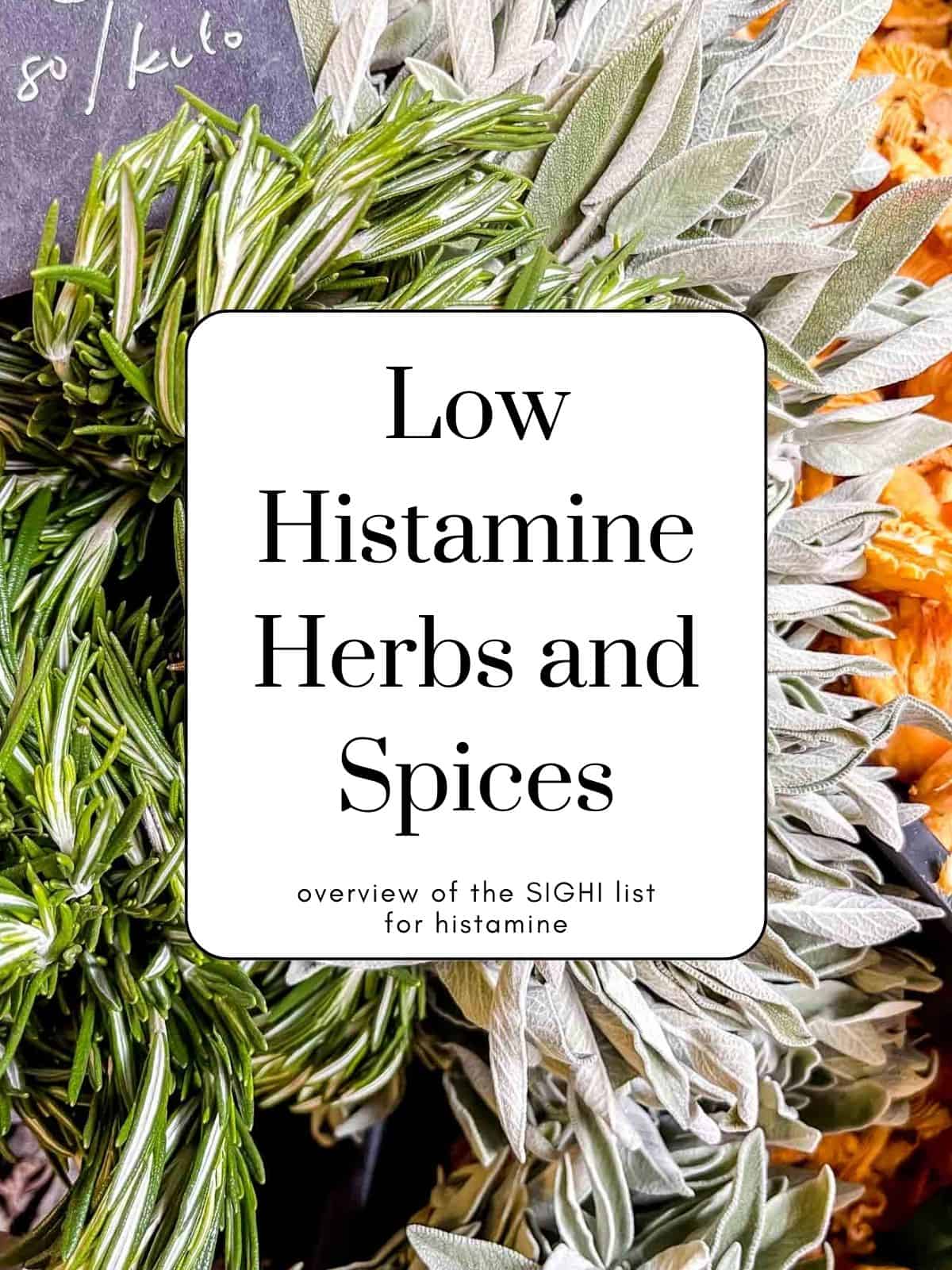
Jump to:
Low histamine herbs
The SIGHI list has a large number of herbs that are scored as low histamine, and as 0 on their scale from 0-3. One thing I will note is that it isn't clear whether the list refers to fresh or dried herbs. I use both personally, although mostly fresh in the summer when my windowsill and garden is awash with herb pots!
I've linked to dried varieties in case it is helpful, where appropriate.
Scoring as low histamine (0 on the SIGHI list) there is:
Basil
Mint
Scoring slightly higher as a 1 on the SIGHI list are:
Dill
Chives
Cilantro - scores 0 but with a ? as a liberator and a note stating that only small amounts are well tolerated.
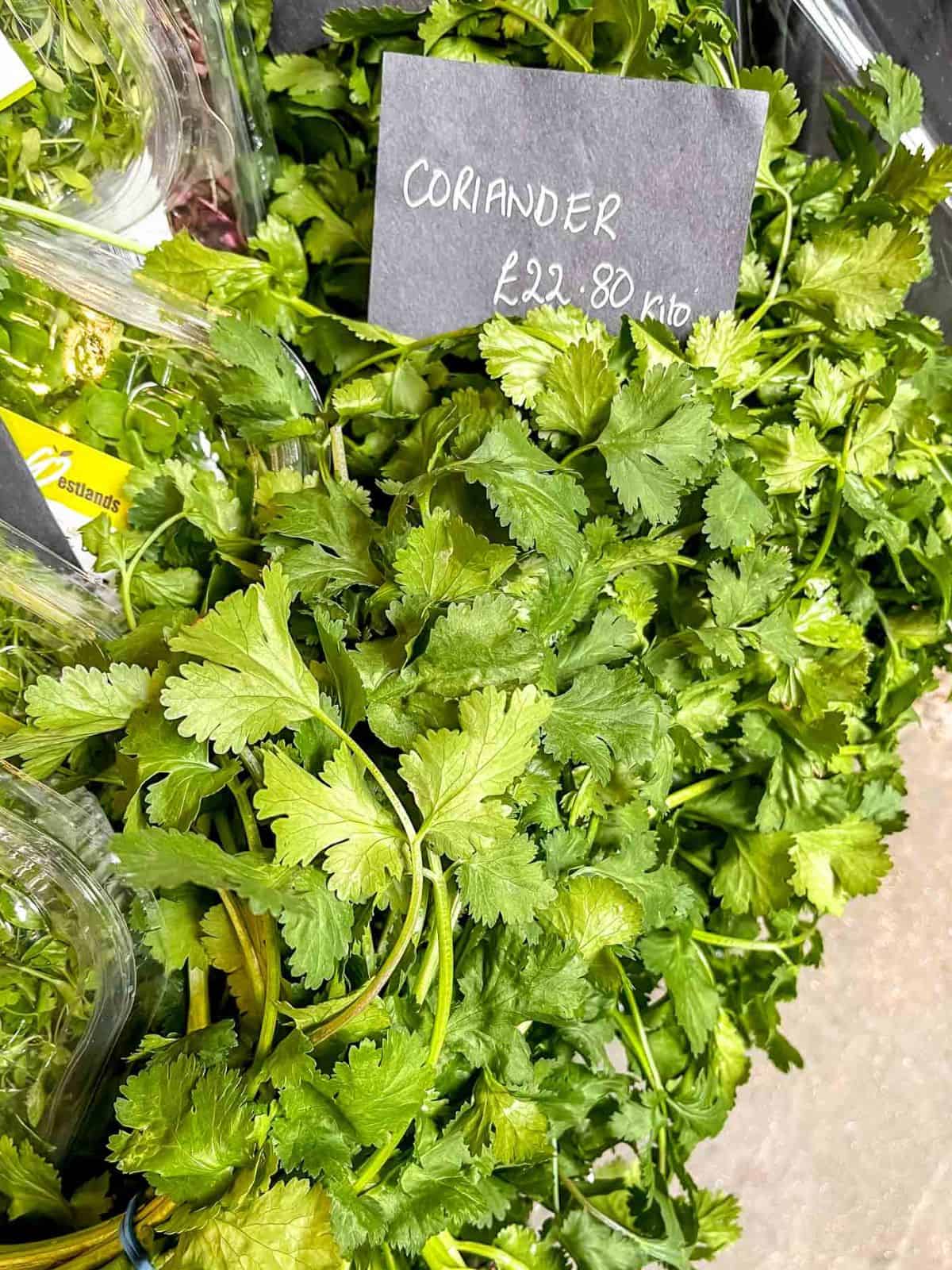
Low histamine spices
One of the first things a doctor said to me when I was advised to go low histamine due to having mast cell activation syndrome was to steer clear of curry powder and chilli powder.
Thankfully though there are other spices that can really elevate the flavor of your meals, and make them a little curry-like (kind of!).
Scoring 0 on the SIGHI list, there is:
Black caraway - personally I haven't ever tried this, but must get some!
Caraway (Carum carvi) - as the SIGHI note, don't get this confused with cumin, which is higher histamine and noted to be a liberator.
Cardamom - there is a note stating that some varieties may not be well tolerated.
Cinnamon - I will note that this is rather controversial and other histamine lists do rate it as higher histamine.
Scoring slightly higher as a 1 on the SIGHI list are:
Ginger
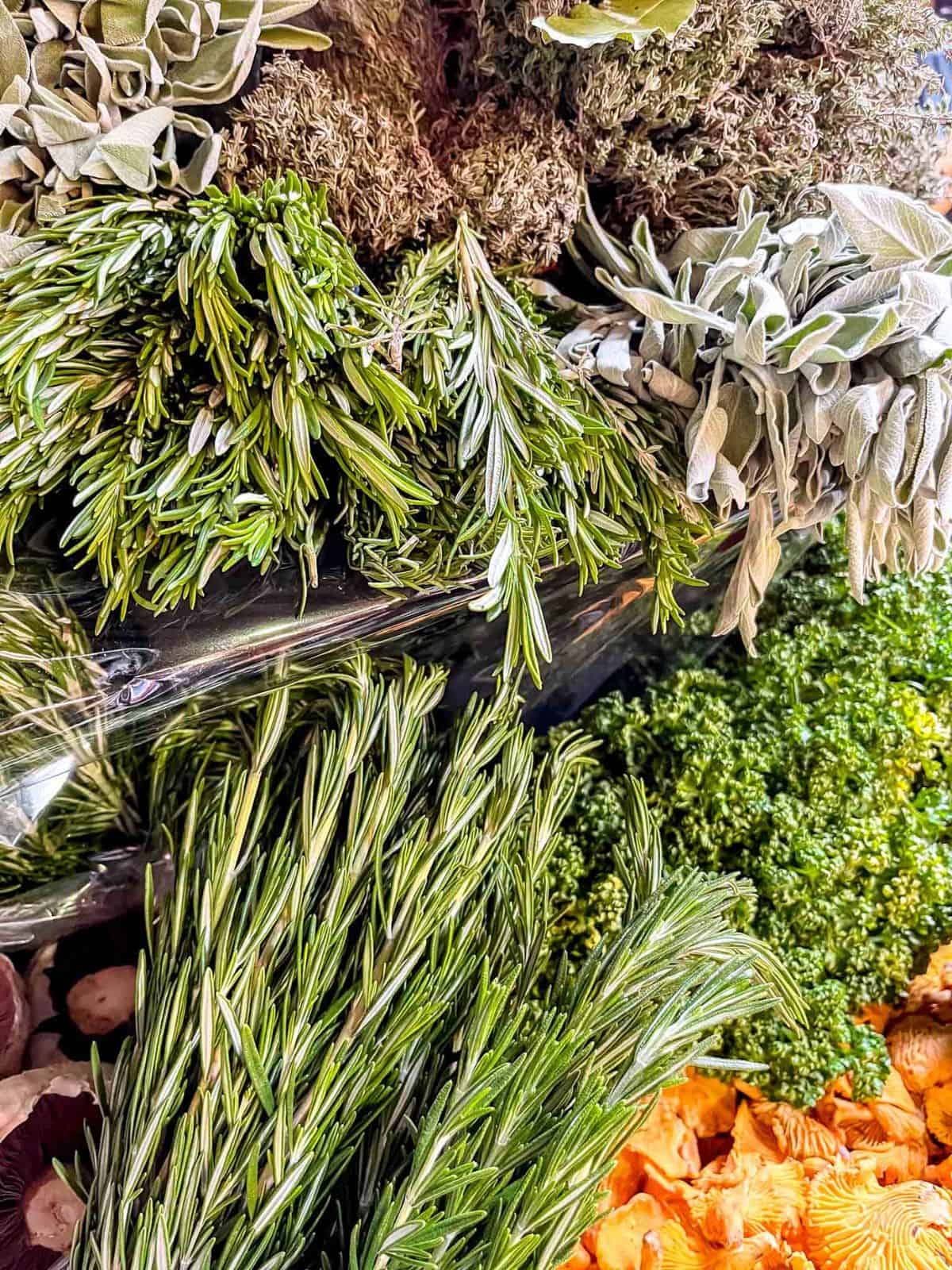
And some other flavourings
Vinegar
Vinegar appears to be quite a tricky one for those on a low histamine diet. While many are high histamine, such as red and white wine vinegar and balsamic, there is white distilled vinegar which scores 0 on the SIGHI list. It has a ? as a liberator and a note 'Low histamine, but not free from histamine. Use sparingly. Check for intolerated additives'
I will say that from conversations with people on my Low Histamine Kitchen Instagram, it appears individual as to whether people can tolerate any form of vinegar.
Garlic
Garlic scores 1 on the SIGHI list. Personally I mostly use fresh, but there is also garlic powder if you tolerate well.
How to enjoy your low histamine herbs and spices
I thought it would be fun to shares some recipes that make use of these herbs and spices, and I think they are full of flavor! There are so many to choose from on the low histamine recipes page here on the site, but I've picked a few favorite and popular ones for some of the herbs and spices.
Basil
The first thing that comes to mind when I think of basil is caprese salad, and then pesto.
Baked stone fruit caprese salad
Sage
I am a huge fan of sage for its pungent taste that definitely gives a lot of flavour. I most often use it with brown butter as it goes so well and feels quite indulgent.
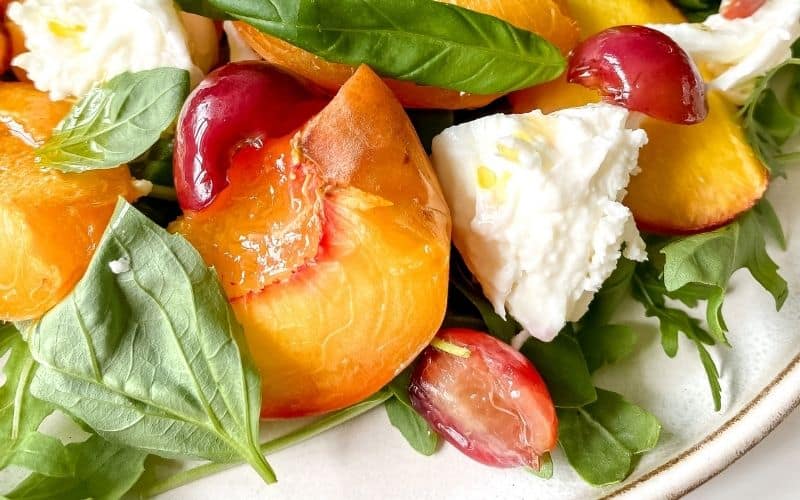
Rosemary
This always feels like a Sunday lunch kind of herb, if you know what I mean! Perfect for adding lots of flavor to meat and vegetables dishes.
Cardamom
I still remember the day I discovered cardamom was low histamine and have been using it on so many dishes ever since! It works as both a sweet and and savory flavoring in my opinion, and so is very versatile.
Please note that while cardamom scores 0 on SIGHI, there is a note (in French) that some varieties may not be well tolerated.
Cardamom chia pudding with blueberry compote
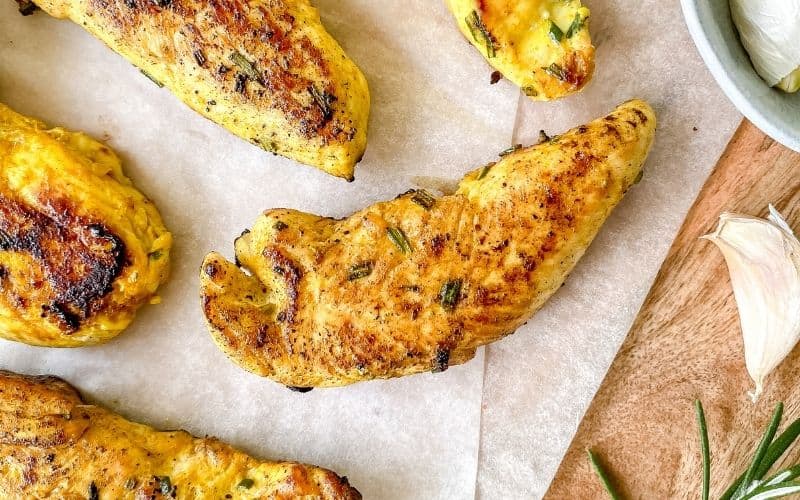
Sweet paprika
Not to be confused by hot or smoked paprika, sweet paprika is milder and has a different (but delicious!) flavour.
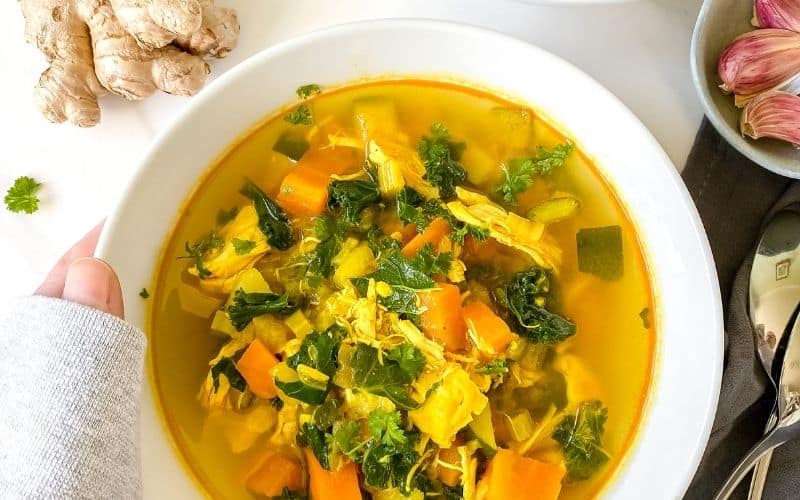
I hope you enjoy some of these recipes, and perhaps discovered a herb or spice that you don't tend to use. I think that following a restrictive diet encourages you to explore all the foods that you can enjoy. I know I didn't ever use cardamom before having MCAS but now it is always in my pantry!
Related posts
Low histamine recipes collection
10 tips for starting a low histamine diet
Tips for following the low histamine life
I’m always in the kitchen, so come join me on Instagram and Facebook to be the first to hear of new recipes and resources!
Please note that this post does not constitute medical or dietary advice in any way. It is for informational purposes only, and all persons should consult with a qualified medical professional for advice on their diet and health.

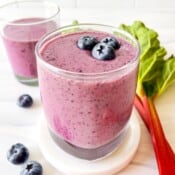
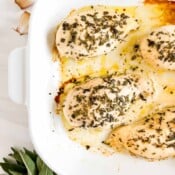
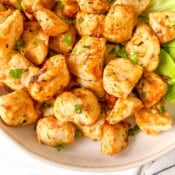
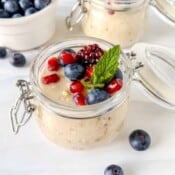
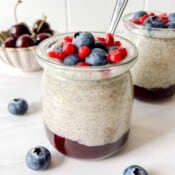
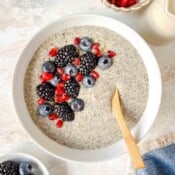
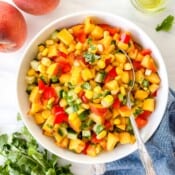
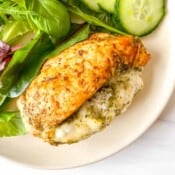
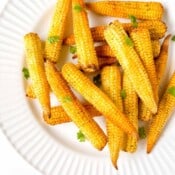
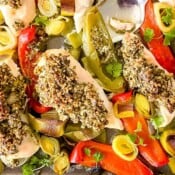
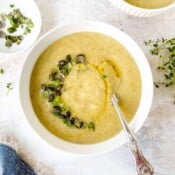
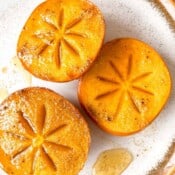
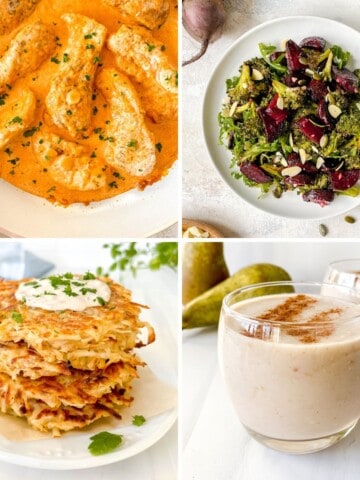
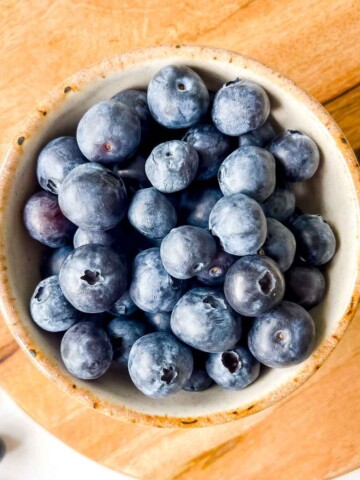
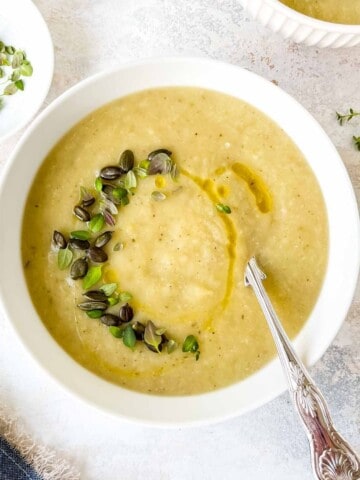
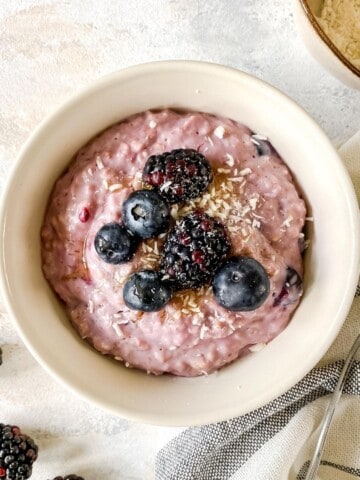
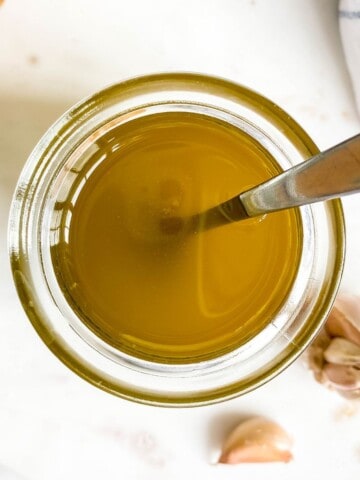
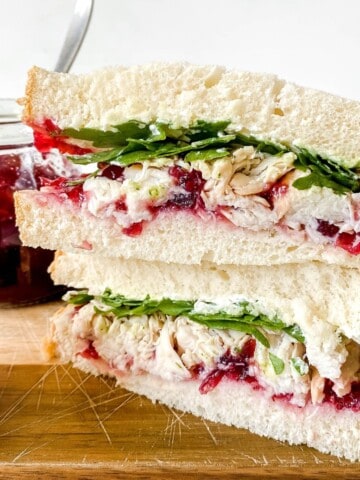
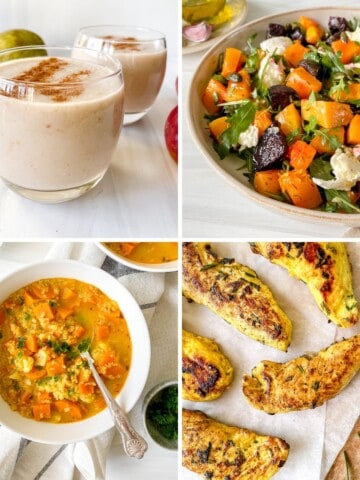
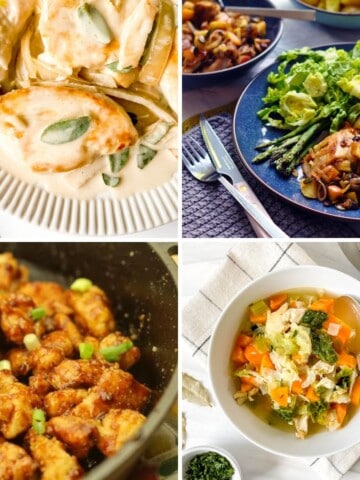
Megan says
Do these rules apply to both fresh and dried herbs? The age of dried herbs scares me a little, I wonder if that could be a cause of higher histamine levels.
Claire says
Hi Megan, I would suggest that you work with a dietician for your personal health circumstances and the types of foods that are suitable for you. Just to note that this post gives an overview of the SIGHI list, so it isn't 'rules', rather information. On the SIGHI website, there is further information on this page: https://www.histaminintoleranz.ch/de/therapie_histaminpotential.html#getreide where it states that both fresh and dried are well tolerated. However, it is important to note that this appears to be in reference to the elimination diet (it isn't quite clear), and perhaps therefore to those with histamine intolerance rather than a mast cell disorder. For this reason, it is really important for people to work with a dietician to assess the appropriate foods for their personal health circumstances. We all vary in what we can tolerate. All information on this website is for informational purposes only and does not constitute medical or dietetic advice.
Megan says
Thank you so much!!
flo says
Thank you for this useful post.
Many herbs which is very cool, but sadly very few spices are allowed in our case.
-Sighi gives coriander seeds, cloves and juniper as score 0.
-Maybe you could also add Gomasio powder (roasted and salted sesame) in the a spices list. Is is wonderful on potatoes and chicken salads. Same for roasted sesame oil which brings a nice complex umami flavor in asian Woks (instead of soy sauces) or on sashimi salmon. Sesame scores 1 in the Sighi list.
-Other options I sometimes use to replace vinegar/ lemon juice:
> Acerola / blackcurrant / cranberry / pomegranate as juice or powder (score 0).
> pure Vitamine C powder (Sighi score 0, but rated as low inhibitor).
Claire says
You're welcome Flo! I like to use turmeric and sweet paprika a lot as herbs that score 0 on the SIGHI list, as well as ginger. But it's always important to use hte foods that work for us as individuals.
Robin says
Hi Claire,
I have recently been diagnosed with Mast cell disease/Mast cell activation syndrome and in the process to be tested for Mastocytosis. I also have several other health issues: connective tissue disease, dercum's disease, parathyroidism, diabetes type 2, and etc...
I am new to the Mast cell and Diabetes. Any chance you are familiar with diet restrictions that would be beneficial (also has to be gluten free and I'm lactose intolerant)? I am not able to have anything canned, jarred, boxed, fortified, sugar free (as much as possible), no chocolate, no acidic fruits, VERY limited amounts of fruits with natural sugar, no seafood, no red meats (including pork), no processed meats of any type, limited amounts of cabbage/broccoli/cauliflower and no corn. 😞
I have a HUGE list of foods I cannot eat, but not much for what I CAN.
ANY help would be SO appreciated.
Thank you!
Claire says
Hi Robin, sorry to hear that you have so much going on. It must be very challenging. I think the best course for you would be to see a dietician. They are trained to help with complex medical conditions in relation to diet. Wishing you the best, Claire